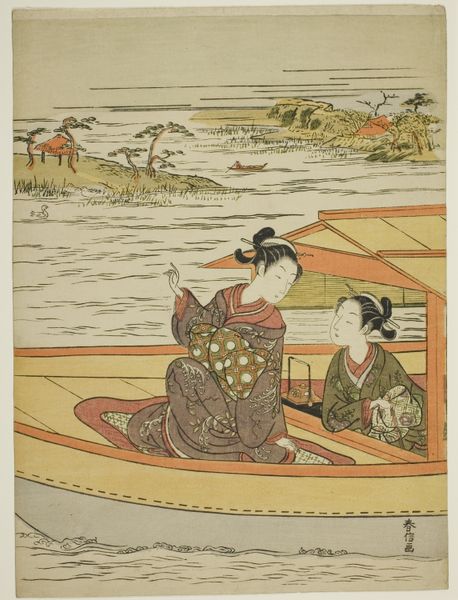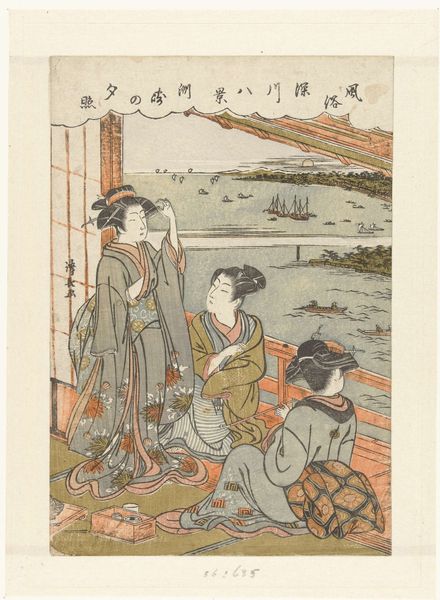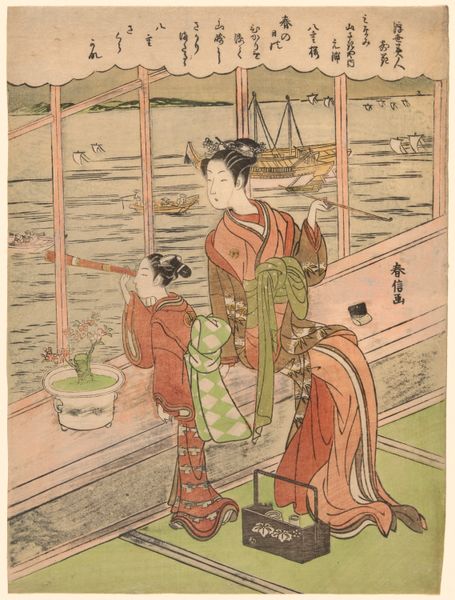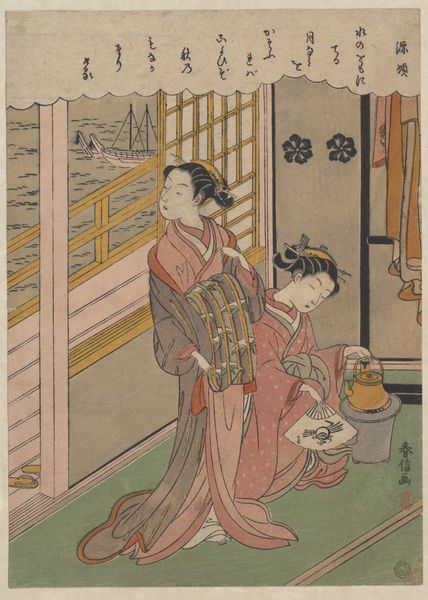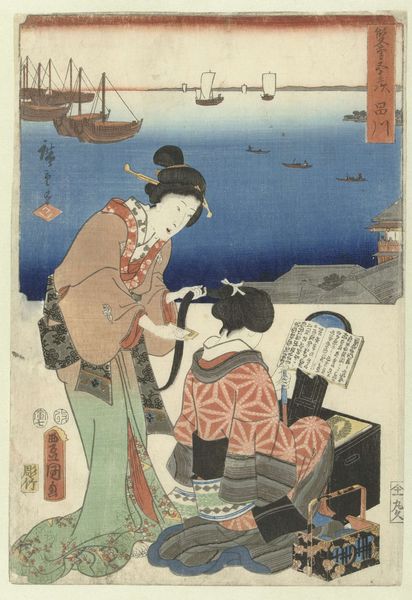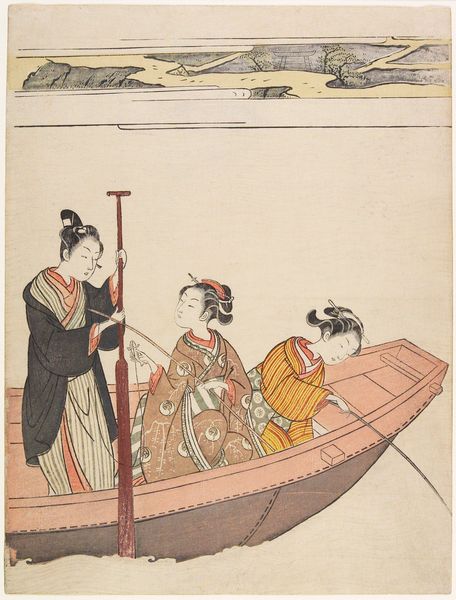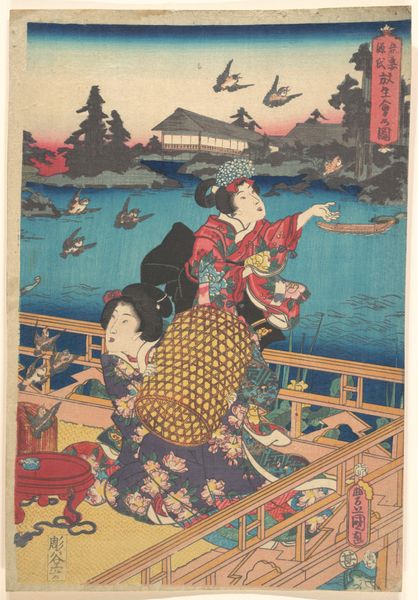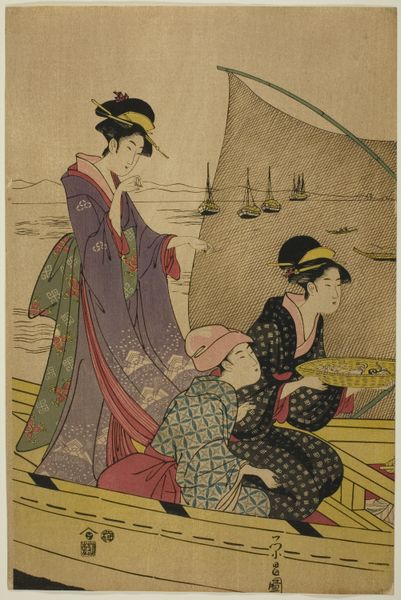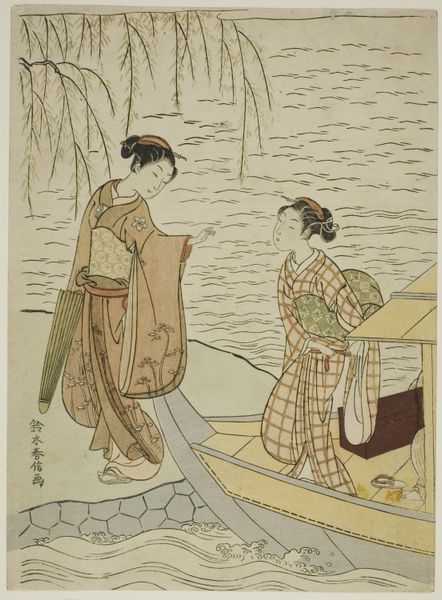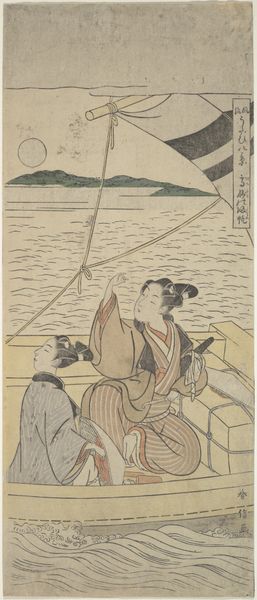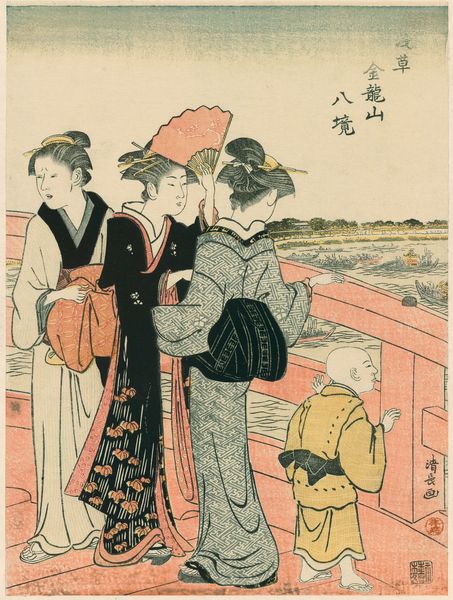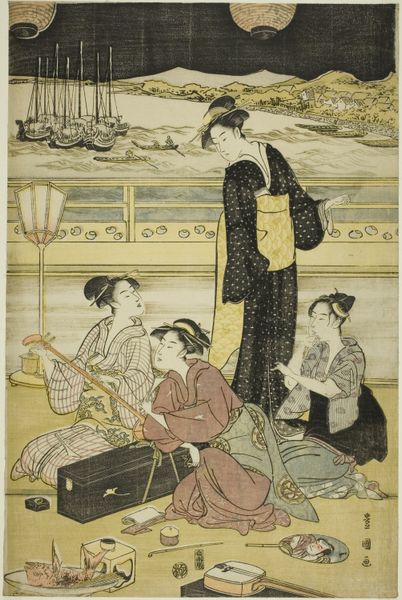
Gonchunagon Sadaie (Fujiwara no Teika), from an untitled series of parodies of the Three Evening Poems c. 1767 - 1768
0:00
0:00
print, woodblock-print
# print
#
asian-art
#
landscape
#
ukiyo-e
#
woodblock-print
#
genre-painting
Dimensions: 10 3/8 × 7 5/8 in.
Copyright: Public Domain
Curator: Oh, I adore this print. We're looking at "Gonchunagon Sadaie (Fujiwara no Teika), from an untitled series of parodies of the Three Evening Poems," a woodblock print made by Suzuki Harunobu around 1767 or '68. It's part of the Art Institute of Chicago's collection. Editor: It has such a gentle, contemplative feeling, doesn’t it? The colors are muted, almost whispering to each other, and those figures seem lost in thought. Is it always this still near the water? Curator: It’s an ukiyo-e print, and these were popular, almost like modern postcards in their time. But Harunobu elevated the genre. What strikes me is the conscious act of creating art out of craft, through labor. Look at the precision required for these blocks. How many cuts, how many proofs, what a material process! Editor: And that's what's truly delightful here. This isn’t some high-minded court portrait. Harunobu is engaging with a playful sort of genre-painting. The image almost feels stolen. They're not aware that they are observed in this piece and perhaps, the scene would not exist if we weren't here looking. Curator: It touches on how artists play with, you know, historical figures or events. This print is not just about skill, labor, materials— it’s about referencing Sadaie in such a common context! It kind of pokes fun at him while honoring his legacy. And this particular copy had the poem attached on it, just visible in the upper right corner of the piece, which helps link that idea. Editor: Well, seeing the world through Harunobu's lens reminds me that art exists within these systems of production, consumption, and appreciation. From the woodblock carvers to the patrons acquiring them, these ukiyo-e prints illuminate an entire socio-economic web of making and owning. It's as much a portrait of materials and processes as it is people. Curator: Exactly! So next time we wander around the river or a pond, we might steal a glance at passers-by sitting with nothing to do but just enjoy nature—with an imaginary artist making a ukiyo-e print from what we see. Editor: Or think about the journey that ordinary wood took through countless human hands to reach that moment of captured beauty.
Comments
No comments
Be the first to comment and join the conversation on the ultimate creative platform.
